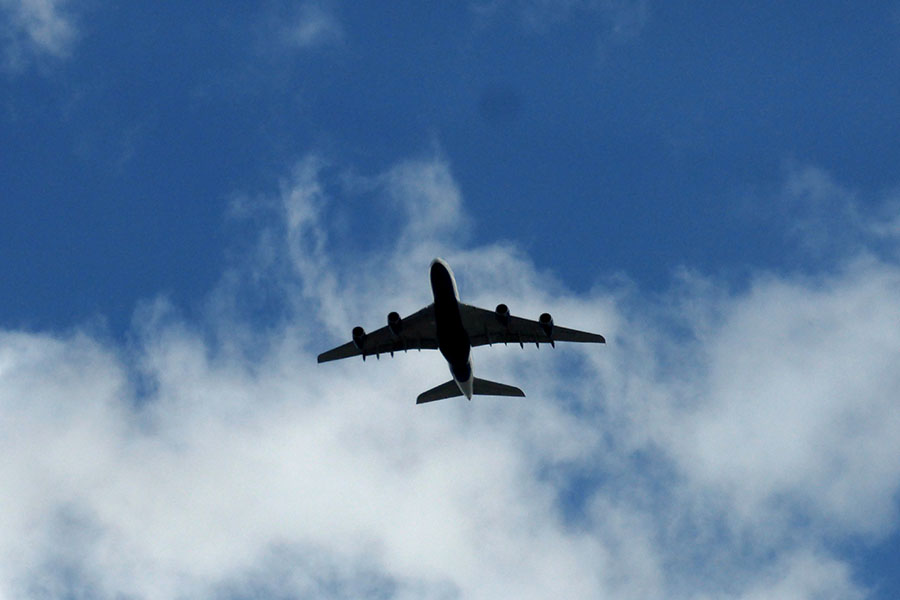 |
The airline industry has undoubtedly been one of the hardest-hit by the coronavirus as people abandoned trips on tightly packed airplanes to avoid exposure. This almost immediate world-wide drop in air travel in early 2020 presented researchers with an unprecedented opportunity to study how emissions from air travel affect the air we breathe.
Assistant Professor Jennifer Kaiser and Adjunct Professor Sally Ng have set up two measurement sites to track changes in air quality resulting from the Covid-19 response. At the first site, on the Ford Environmental Science &Technology rooftop lab at Georgia Tech, Kaiser and Ng are using a set of instruments to make chemically detailed measurements of air pollution, allowing them to dig deeper into reaction mechanisms and test our current understanding. This measurement site is representative of the average air quality close to the urban core.
The second site is located near Hartsfield-Jackson Atlanta International Airport. There, Kaiser is using a more limited set of instruments to target nitrogen dioxide and formaldehyde. These two pollutants are visible from satellite-based instruments and can be used to map air quality.
“Satellites see a hot-spot of nitrogen dioxide and formaldehyde right at the Atlanta airport,” Kaiser said. “The instruments we’ve deployed are designed to see if ground-based observations track with satellite-based observations. Changes in aviation traffic during Covid-19 allow us to observe a large range of emissions and concentrations in a short period of time.”
Often cited as the world’s busiest airport, Hartsfield-Jackson has undergone a dramatic decrease in air traffic in 2020. For example, the Atlanta Journal-Constitution reported that the total number of flights at Hartsfield-Jackson International declined 73 percent in April 2020 compared with April 2019, according to the airport’s monthly air traffic report. The Atlanta airport handled 20,406 flights in April 2020, down from 75,669 in April 2019.
Kaiser said their measurements over the summer show this pattern has made an impact. Observations of nitrogen dioxide over Atlanta reveal that the airport hot-spot is no longer as distinct—the overall magnitude has decreased, but also, the spatial pattern has dramatically changed. While Kaiser and Ng still need to analyze the data, they report that air quality has indeed improved during 2020.
“We’ve had less days with poor air quality this summer compared to the previous five-year average,” Kaiser said.
Related:
Covid-19 Response: Telecommuting Past, Present and Future
Covid-19 Response: Wastewater-Based Epidemiology
Georgia Tech Covid-19 News
